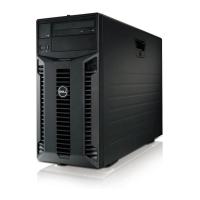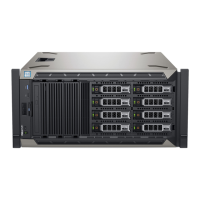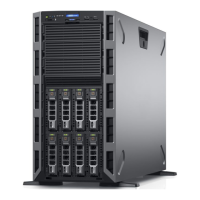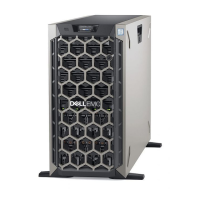3. System identification button 4. iDRAC port (optional)
5. System identification connector 6. USB port
7. vFlash media card slot (optional) 8. USB port
9. NIC port 10. Video connector
11. Serial connector 12. NIC port
13. PCIe expansion card slots (6)
Table 7. Back panel Features
Indicator,
button, or
connector
Icon Description
Power supplies
(PSU1 and PSU2)
Redundant power
supply
Up to two 495 W, 750 W, or 1100 W
redundant AC power supplies.
Non-redundant
power supply
One 450 W non-redundant AC power
supply.
NOTE: Non-redundant power supply is
supported in systems with cabled hard
drives and systems with an x8
backplane.
USB ports (6) Allows you to connect USB devices to the system. Five ports are
USB 2.0-compliant and one port is USB 3.0-compliant.
System
identification
button
Press the system ID button:
• To locate a particular system within a rack.
• To turn the system ID on or off.
To reset iDRAC, press and hold the button for more than 15
seconds.
NOTE: If the system stops responding during POST, press and
hold the system ID button (for more than five seconds) to
enter the BIOS progress mode.
iDRAC port
(optional)
Use the iDRAC8 Enterprise port to remotely access iDRAC. For
more information, see the Integrated Dell Remote Access
Controller User’s Guide at Dell.com/idracmanuals.
System
identification
connector
Use the system identification port to connect the system status
indicator assembly through the optional cable management arm.
vFlash media
card slot
(optional)
Allows you to insert a vFlash media card.
NIC port (2) Two integrated 10/100/1000 Mbps NIC connectors.
24
